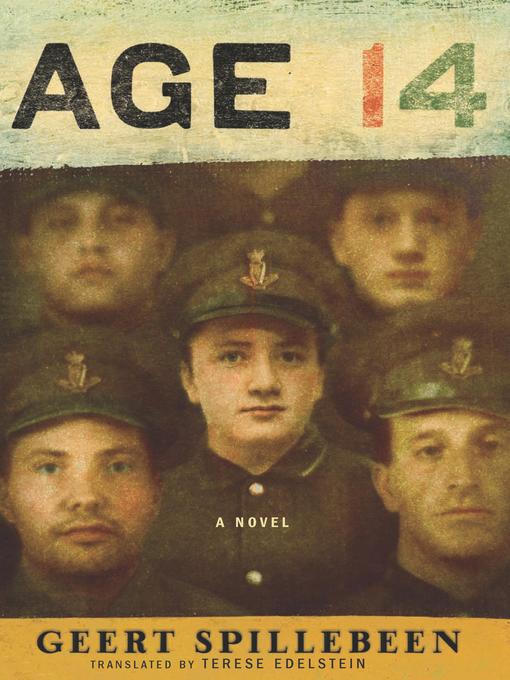
Age 14
فرمت کتاب
ebook
تاریخ انتشار
2009
Lexile Score
790
Reading Level
3-4
ATOS
5.3
Interest Level
6-12(MG+)
نویسنده
Terese Edelsteinناشر
HMH Booksشابک
9780547417424
کتاب های مرتبط
- اطلاعات
- نقد و بررسی
- دیدگاه کاربران
نقد و بررسی

October 19, 2009
Patrick Condon, a strapping Irish boy who, even at age 10, stood “head and shoulders” above his peers, dreams of joining the military. His opportunity comes at age 12 when, posing as his older brother, he successfully enlists as a part-time soldier with the Militia Battalion shortly before the onset of WWI. His training sessions seem like a game; the grim reality of fighting an actual battle doesn't set in until two years later when Patrick, who has advanced to the status of full-time soldier, is called to defend France and Belgium. Facing trench warfare firsthand, Patrick wonders, “What is worse? To be hit by a piece of shrapnel that tears off a limb and rips open your belly? Or to be killed right away?” Based on historical facts, this tale of an underage soldier captures the initial excitement and ultimate disillusionment of men, young and old, fighting at the front. Spillebeen's choice to reveal Patrick's fate in the first chapter may lessen the suspense, but readers will be emotionally prepared to bear the story's conclusion. Unadorned prose expresses unsettling truths in straightforward, clear terms. Ages 12–up.

November 1, 2009
Gr 6-10-In 1913 Ireland, 12-year-old Patrick Condon lies about his age in order to join the military. Based on the true story of a World War I soldier who died when he was 13, "Age 14" captures the brutality and boredom of the life of a soldier during this period. In addition, the introduction of mustard gas as a German weapon is a major plot point. Spillebeen has clearly spent a great deal of time researching her subject. Unfortunately, in re-creating the boy's life in such detail, the first half of the book drags in places. The intricacies of the hierarchy of the Irish military are never quite clear, and are occasionally confusing. The second half of the book, however, which details Patrick's experiences in the trenches around Ypres, Belgium, moves much more quickly. There are occasions when the English translation feels unauthentic. An author's note provides information about not only the real Patrick Condon and Fritz Haber (the inventor of mustard gas), but also about the methods the author used for research. While this is a fine historical novel, it will be more useful in a school setting than in a public library."Kristin Anderson, Columbus Metropolitan Library System, OH"
Copyright 2009 School Library Journal, LLC Used with permission.

September 1, 2009
Grades 8-12 Among the books for youth about World War I, few are told from the viewpoint of a child soldier. Based on a true story, this spare, powerful novel, translated from the Dutch and first published in Belgium, focuses on Patrick, a poor Irish kid who is just 13 when war breaks out. He dreams of escaping his dreary future and abusive dad and finding adventure and glory in the army. Tall for his age, he takes on his older brothers name, and the recruiters knowingly accept him into the service when he claims that he is a 17-year-old named John. After minimal training, he finds himself in the trenches in Flanders, right next to the enemy, and Spillebeen brings the story to a realistic, grim conclusion. There is some historical background woven into the tense narrative, including a scene with the inventor of poison gas, as well as some statistics. But the boys shocking loss of innocence when confronted with horrific slaughter forms the core drama. As the author points out, there are child soldiers today, and they also find no glory.(Reprinted with permission of Booklist, copyright 2009, American Library Association.)

























دیدگاه کاربران